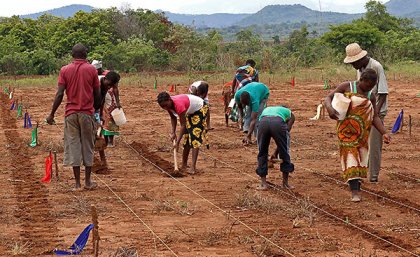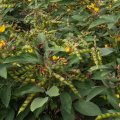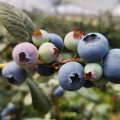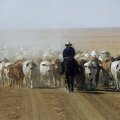
A Brisbane researcher is harnessing colour-coding techniques to overcome communications barriers while working to improve summer crop productivity in Australia and Africa.
University of Queensland PhD student Casper Roxburgh said his work in Sussundenga, a small town in central-western Mozambique’s Manica Province, had challenged him to re-consider his research methods.
“In a region where locals generally speak either Portuguese or indigenous languages, one of the biggest challenges was how best to coordinate people,” he said.
“There’s obviously a language barrier but more than that, email is not a common way to communicate professionally.
“It’s all done by phone and in person. Coming from Queensland, we’re used to planning things on paper, via email and with electronic documents.
“In this part of Mozambique, it’s all done physically. You have to show people what you intend to do.”
Mr Roxburgh is working on an international aid project to improve maize and legume yields. The SIMLESA project is funded by the Australian Centre for International Agricultural Research and a joint initiative with UQ’s Queensland Alliance for Agriculture and Food Innovation.
He has sought to overcome communication challenges (which are compounded by low literacy rates) with a system of colour-coded markers to guide workers planting trial plots.
 The Manica Province is a large tropical agricultural production region with smallholder farms managing a mix of subsistence maize crops and horticultural cash crops in an area that can get as much as 2000 mm of rain during its annual wet season.
The Manica Province is a large tropical agricultural production region with smallholder farms managing a mix of subsistence maize crops and horticultural cash crops in an area that can get as much as 2000 mm of rain during its annual wet season.
The site is being used to test reduced maize population densities (fewer plants in a given area) to improve yields and risk management on low-fertility soils with high rainfall variability.
Earlier work by the research team estimated that simple improvements of farming practice such as plant arrangement could lead to a 120 per cent increase in production for the poorest maize farms in the province.
Nationally, Mozambique has very low maize production levels (959.4 kg/ha). Poor farmers in Manica Province have much lower yields (200 kg/ha), which are extremely low even by sub-Saharan African standards.
Mr Roxburgh said the project was focusing on these poorest farmers and trying to provide them with simple economical options to improve production.
“We hope our simple changes will help the farmers to increase their production to more reasonable and profitable levels,” he said.
“Eventually they might be able to start investing in high-value inputs such as fertilisers and improved seeds.
“More profits will lead to more money for sending children to school, and increased food production will reduce malnutrition and infant mortality rates.”
Farmers from Manica Province involved in the SIMLESA project will visit the site in March to see the results for themselves and share in a discussion of the possibilities for their own fields.
In Australia, Mr Roxburgh is surveying and researching ways to improve the nitrogen agronomic use efficiency in large commercial sorghum farms.
“We have found that there are more similarities than differences between these two different production systems,” he said.
His PhD thesis will compare the challenges and opportunities for the improvement of both Australian and African farming systems.
Media: Caspar Roxburgh, c.roxburgh@uq.edu.au (currently in Mozambique); Dr Daniel Rodriguez, (07) 4688 1437, 0434 075 094, d.rodriguez@uq.edu.au; or QAAFI Communications, 0417 425 510. Caption for image 2: A farmer sows a maize trial by hand using the ‘basin’ method
.jpg)










